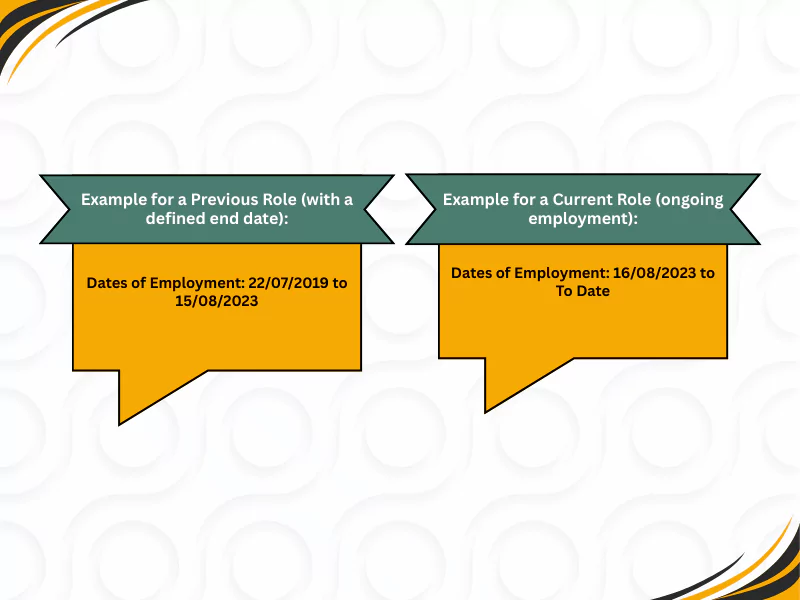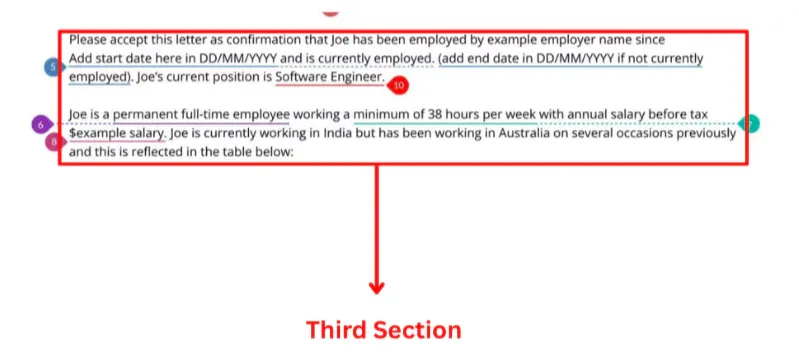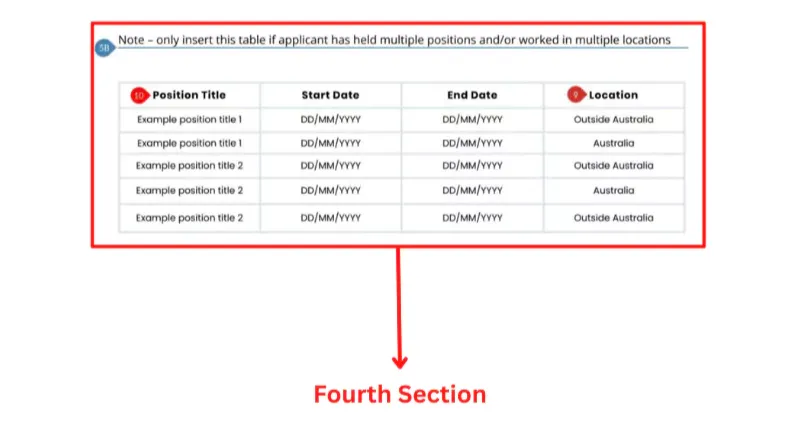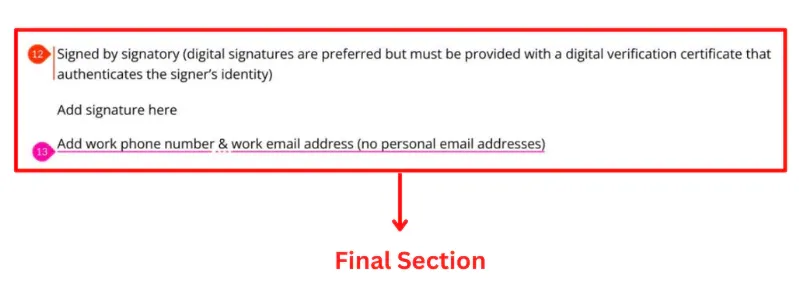Are you an international ICT professional dreaming of a tech career in Australia? But do you lack a formal IT qualification? Fortunately, the Australian Computer Society (ACS) offers the Recognition of Prior Learning (RPL) pathway. This process is designed to value your real-world experience over formal education.
However, the success of your entire application often hinges on one pivotal document: the employment reference letter. Many highly skilled applicants falter at this stage, not due to a lack of expertise, but because they struggle with how to write an ACS RPL reference letter that meets the society’s exacting standards. After all, this document is the cornerstone of your skills assessment. It generally provides verifiable proof that your practical skills are equivalent to a formal degree.
In this guide, we will walk you through the entire writing process. At the end of reading, you will be equipped with the essential knowledge, tips, and insights to craft a compelling ACS employment reference letter (ERL). So, ready to get one step closer to your Australian dream? Let’s begin:
Table of Contents
ToggleWhat Is the ACS Employee Reference Letter (ERL)?
An ACS employee reference letter is a formal document that your current or former employer provides. Its primary purpose is to validate your work experience and ICT-related competencies for the ACS Skill Assessment.
Unlike a standard character reference, this employment reference letter details your
1. Specific job roles
2. Responsibilities
3. Duration of your employment
According to the ACS, it’s vital evidence that substantiates the claims made in your ACS RPL report. This is especially important when you lack a formal ICT degree. In another way, consider this your professional testimony endorsed by those who have managed your work.
Why Is the Employment Reference Letter So Important for ACS RPL Reports?
The ACS reference letter bridges the gap between your self-assessed competency and the ACS assessor’s need for objective proof. Let’s understand why it carries so much weight in the ACS assessment:
Establishes Authenticity & Credibility
The RPL Project Reports are self-authored. In essence, you claim that your experience is equivalent to a formal degree. On the other hand, the employment reference letter for ACS RPL is the independent verification of that claim. It is a formal testament from an employer (as a recognised business entity). It acts as the official, third-party validation. Without this external validation, your claims remain just that- claims.
Moreover, a skills assessment application may be rejected or significantly delayed without a proper and compliant ERL. Consequently, it hinders your chances of obtaining an Australian visa through programs like the General Skilled Migration (GSM).
Contextualises Your Technical Skills
Your project reports detail what you did and how you did it. For example, “I developed a secure payment gateway using Python and Stripe API”.
On the other hand, the reference letter explains why and in what capacity you did it. For example, “As a Senior Software Engineer, their primary responsibility was to design and implement secure e-commerce solutions for our enterprise clients”.
This allows the assessor to understand:
1. The crucial business context
2. A confirmation that your technical skills were applied in a genuine, professional environment, not just in a personal project or academic setting.
Validates the “Skilled Employment” Level
The ACS assesses not just your experience, but your skilled employment. The reference letter is the primary evidence that your duties and responsibilities were at a professional ICT level.
The letter’s description of your tasks helps the assessor determine if your role was
1. Sufficiently complex
2. Required a high degree of competency
This understanding is a prerequisite for a positive skills assessment. It transforms your work history from a timeline of jobs into a verifiable record of professional-level Australian employment achievement.

Part 1: What Are the Key Requirements of an ACS RPL Reference Letter?
Understanding the fundamental ACS RPL assessment reference requirements is the first step toward a successful application.
Requirement 1: Record of Active/Previous Employment
First, you need to have a record of employment- it can be a previous or current job. This is necessary because, as per the ACS RPL employment reference letter guidelines, an ERL should be provided by your current or former employer.
More specifically, an authorised representative familiar with your employment history can provide this letter to confirm your skills and abilities as an ICT professional.
Who is Generally Responsible for Providing a Written Employment Reference Letter?
This typically includes individuals such as your
- Direct manager or supervisor
- HR manager
- Department head
- Team lead
Requirement 2: Supporting Documentation to Prove Employment Payments
Next, as per the skill assessment guidelines, one of the ACS requirements is providing supporting documents to prove the salary range. To prove employment payments for the Migration skill assessment, applicants must provide at least two documents from the following categories.
- Official tax payment documents or records.
- Insurance records related to employment.
- Payment slips that clearly show the name of both the employer and the applicant.
- Bank statements indicating salary payments received from the employer.
These documents help verify the paid nature of the employment and that the salary was fair for the level of competence demonstrated.
Part 2: What Details Must Be Included in an ACS RPL Reference Letter?
A perfect employment reference letter includes the following details:
1. Duration of Employment & Job Title
The exact start and end dates of your employment in DD/MM/YYYY format. For your current role, the end date should be written as ‘To Date’.

Also, your work reference letter must include your official designation or position held during the employment episode.
2. Duties and Responsibilities with Organisational Hierarchy
This is the most critical section. It includes a detailed description of the tasks and responsibilities undertaken during the concurrent employment. These must align closely with the nominated occupation’s ANZSCO (Australian and New Zealand Standard Classification of Occupations) code. At least 65% of your duties are recommended to align with the nominated occupation.
Generic descriptions should be avoided in favour of specific examples of work performed, including software platforms, programming languages, and project work. Also, quantify your achievements where possible (e.g., “managed a team of 5” or “improved system efficiency by 15%”).
Also, specify your ranking within the company structure to provide an understanding of your job position and degree of responsibility.
3. Working Hours
Clearly state whether the employment was full-time or part-time. Specify the number of hours worked per week. Generally, a minimum of 20 hours per week is required for skilled employment for RPL.
4. Country of Employment
When submitting the online application, employment history must be clearly separated into “Australian Employment” and “Outside of Australia Employment” episodes.
1. Australian Employment: First, you must list each work episode individually. Also, include the job title and employment dates. Then, describe your tasks and responsibilities in detail. Finally, each episode must be six months long.
2. Employment Outside of Australia: Each period of work outside Australia must also be documented separately. If an applicant worked for various employers outside Australia, or if international employment was broken up with Australian employment episodes, each duration must be recorded individually. If an applicant worked in multiple countries (excluding Australia) for the same employer in a closely relevant occupation, this can be listed as a single period of employment outside Australia. In this case, list the locations and corresponding dates for that one employment event.
5. Company Letterhead & Signatory’s Details
The letter must be written on official company letterhead. It must clearly display the
- Company’s name
- Address
- Contact details
- Company logo
Also, the authorised representative must sign it; digital signatures are allowed if verifiable.
Your direct supervisor or a human resources manager must sign the employment reference letter. Their name, job title, and contact information must be clearly stated below their signature. Verifiable digital signatures are also acceptable.
Certification by an authorised notary is also highly recommended for the assessment process.
NOTE: If an applicant cannot obtain an employment letter from an employer, a statutory declaration may be provided instead.
Part 3: How to Structure and Format a Reference Letter for the ACS?
Formatting the ER letter for your ACS RPL application is naturally achieved by including the sections mentioned in Part 2. Here’s how to structure it one by one:
First Section of Employment Reference Letter for ACS
At the top right corner
1. Company Letterhead
2. Employer name
3. Address
4. Company website URL address
Second Section of Reference Letter for ACS RPL
This section should be left-aligned right after-
1. Date of letter
2. Addressing The Assessor (e.g., To Whom It May Concern)
3. Your Full Name (e.g., Employment Verification for XYZ)

Third Section (Paragraph Format) of ACS Employment Reference Letter
This section appears in 2-3 paragraphs. This section talks about:
1. Start and End dates of employment in DD/MM/YYYY format
2. Position/Role Title, (e.g., ‘Software Engineer’, ‘Database Administrator’)
3. Employment status (permanent full-time, part-time, contractor)
4. Minimum number of hours worked per week
5. Annual Salary before tax and any benefits (as per your company’s guidelines)
6. Location of work – this will either be ‘Australia’ or ‘Outside Australia’ for each Position held.

Fourth Section of Work Reference Letter (Varies)
This section is a 5B note generally appearing in a tabular format. Only include this if you have held multiple positions over a long tenure. The table must have columns for Position Title, Start Date, End Date, and Location. Then add a row for each Position Title held (refer to 5B in the example image).

Fifth Section of ER Letter for ACS RPL Report
In this section, the ACS reference letter format includes bullet points to mention the duties you carried out in the role. If you have held multiple positions over a long tenure, the 11B Note is required. It includes different sections for each position held. Each section must have bullet points mentioning duties with start and end dates in DD/MM/YYYY format.

Final Section of ER Letter for the ACS RPL Application
This section features
- Digital signature of the authorised person
- Digital verification certificate that authenticates the signer’s identity
- Contact details of the signatory (Full Name, Position Title, Phone Number, and Work Email Address *no personal email address)

Check Out the Reference Letter Sample for ACS
For an accurate visual representation, check out this ACS RPL reference letter sample:

Common Mistakes in ACS RPL Reference Letter for Skilled Employment
Several common errors in ERL can lead to delays or rejection during the RPL assessment process. These include:
1. Incomplete Job Descriptions: Providing generic or insufficient details about job duties. Failing to match them to the ANZSCO code.
2. Inconsistent Dates: Mismatches in employment dates across the reference letter, resume, and other supporting documents.
3. Lack of Specific Information: The information is unclear about the employment period, tasks, abilities, and technologies used. Also, the info is not present in a broad statement and lacks concrete project examples.
4. Incorrect Hierarchical Information: Inaccurate reporting structures or job titles that do not align with the skill level.
5. Unprofessional Letter Format: Not using official company letterhead. Lacking an authorised signature. Omitting employer contact details.
6. Missing Employment Duration/Weekly Hours: Failing to specify exact start and end dates or the average weekly working hours (full-time or part-time).
7. No Signatory Contact Information: Omitting the full name, position, and contact details of the person who signed the letter.
8. Copy-Pasting ANZSCO Duties Verbatim: Directly transcribing ANZSCO job descriptions. This can raise doubts about the authenticity of the applicant’s actual duties.
9. Leaving Out Signature or Date: The absence of an employer’s signature or the date of the issuing of the letter can invalidate the document.
10. Incorrect Company Letterhead: Using an out-of-date, generic, or inaccurate company letterhead.
Avoiding these mistakes is crucial for a successful ACS assessment process.
Unacceptable Scenarios for ACS Work Reference Letters
Certain scenarios will lead to work experience not being considered acceptable for the ACS RPL process:
- Concurrent Work: Only one employment period can be recognised if employed in two jobs simultaneously.
- Unpaid/Partially Paid/Volunteer Work: These are generally not considered when determining your skill level.
- Work for Thesis: Research work done for a thesis will typically be unacceptable as employment experience unless documented by the company as separate from the thesis.
Tips for Writing an Employment Reference Letter for ACS RPL Application
Here are some valuable tips for writing ACS RPL Employment Letter for positive outcomes:
Interact With Your Superior Proactively
First, be proactive and provide your manager with a draft highlighting your key duties and achievements. Your draft must elaborate precisely on your occupational responsibilities and commitments as part of the organisation.
Ask your manager to avoid generic descriptions; instead, request they explain exactly what tasks you were responsible for. You can also look for professionals from a reputable provider of RPL writing services to join the process.
Gather Evidence for Writing an RPL ER
Second, note that a good employment reference letter features claims backed by evidence in your broader application. Therefore, give your manager proper evidence of your skills and experience to help them recall your contributions.
Consider creating an Evidence Portfolio by gathering all relevant documents and samples.
What Evidence Is Required for RPL?
| Evidence Type | Description | Examples |
|---|---|---|
| Direct Evidence | Tangible proof of your skills and abilities. |
|
| Indirect Evidence | Documents and statements that support your skills and experience. |
|
| Supplementary Evidence | Documents that provide additional context or proof. |
|
Key Characteristics of Evidence
- Authentic: It must be verifiable and created by or directly related to you.
- Current: Evidence should be up-to-date and reflect current industry standards.
- Sufficient: It must be comprehensive enough to demonstrate your competency in the required areas fully.
Do the Final Review
After receiving the Employee Reference Letter from your manager, proofread it from your end.
- Once you receive the Employee Reference Letter from your manager, you must proofread it carefully.
- First, meticulously check for any grammatical errors or typos.
- Next, it is wise to run the letter through a plagiarism checker to ensure there is no accidental copy-pasting from other sources.
- Furthermore, you need to confirm that the employment description in the letter directly matches the skill requirements of your nominated occupation. To do this, reconfirm that the description encompasses all the key points from the ANZSCO code that defines your profession.
- Finally, double-check that the skills and experience section effectively highlights your technical competency, problem-solving capabilities, current certifications, and overall professional background.
You can also take professional ACS RPL report writing help and review services from us for further enhancement. We also offer CDR Report writing services.
Conclusion
For any ICT professional aiming to migrate to Australia through the RPL pathway, mastering the ACS RPL reference letter is an essential first step. This single document carries immense weight in the eyes of the Australian Computer Society. By ensuring your reference letters are detailed, accurate, and fully compliant with all ACS guidelines, you can build a strong foundation for your entire application. Every step is crucial, from structuring the ACS employment reference letter correctly to meticulously detailing your skilled employment. For this reason, you must pay close attention to the details, avoid common pitfalls, and consider seeking professional guidance to present a flawless application. Ultimately, your future career in Australia’s thriving tech sector may depend on it.
Frequently Asked Questions
What if I were employed through a recruitment agency?
If a recruitment agency arranged your employment, you must obtain the employment reference letter directly from the ‘host company’ where you were assigned to work. Moreover, a supervisor or manager from that company who directly witnessed or supervised your work must be the one to provide the letter.”
What should I do if I cannot get an employment reference from my employer?
In the event you cannot obtain an employment reference, or if you are self-employed, you must then submit a Statutory Declaration or an Affidavit as an alternative.
Are there any restrictions on the content of the employment reference?
Yes, there are specific restrictions. Primarily, you must not copy the duties directly from Occupations, ANZSCO codes, or another reference, as such submissions will not be accepted. Furthermore, keep in mind that your work experience can only be considered up to your application submission date. For this reason, if any dates or duties are unclear, that work period may be deemed unsuitable.
What documents should I avoid uploading during RPL assessment?
You should avoid uploading documents such as employment contracts, offer letters, appointment letters, or position descriptions. The reason for this is that they are not accessible and, consequently, could delay the processing of your application.
What if my documents are not in English?
If any of your documents are in a language other than English, you must have them translated. For the assessment, you are required to submit both the original document and its certified translation.
How should I format my paper-based documents for upload?
When formatting paper-based documents, you must first scan the original copies in high-quality color at a minimum resolution of 300 dpi. It is important to scan all pages at the exact same resolution and ensure that all edges of the documents are clearly visible. Finally, you should consolidate all pages for a single qualification or employment record into one complete PDF file.
How should I format my electronic original documents for upload?
For electronic documents, you should always upload the original files. In the case of a digitally signed document, you must not combine it with any other file. Additionally, if any of your original PDFs are password-protected, you need to provide the passwords in a separate PDF document.
Want To See My Profile — Click Here Juhi
- Key Reasons for RPL Rejection and How to Avoid Them - October 1, 2025
- How to Write a Summary Statement for Engineering Technologist? - September 25, 2025
- How to Write an ACS RPL Reference Letter? - September 19, 2025

